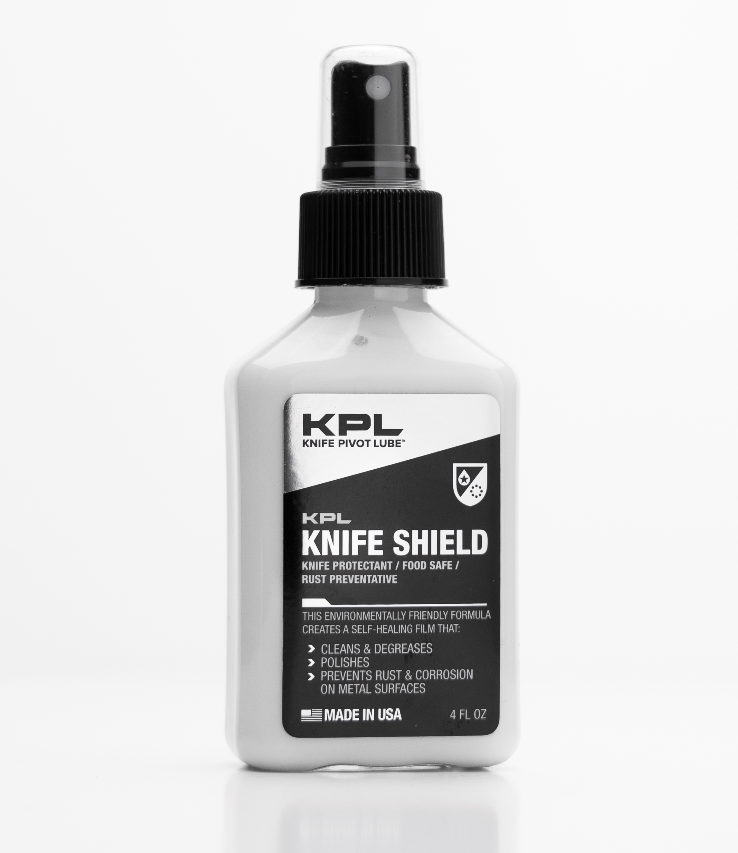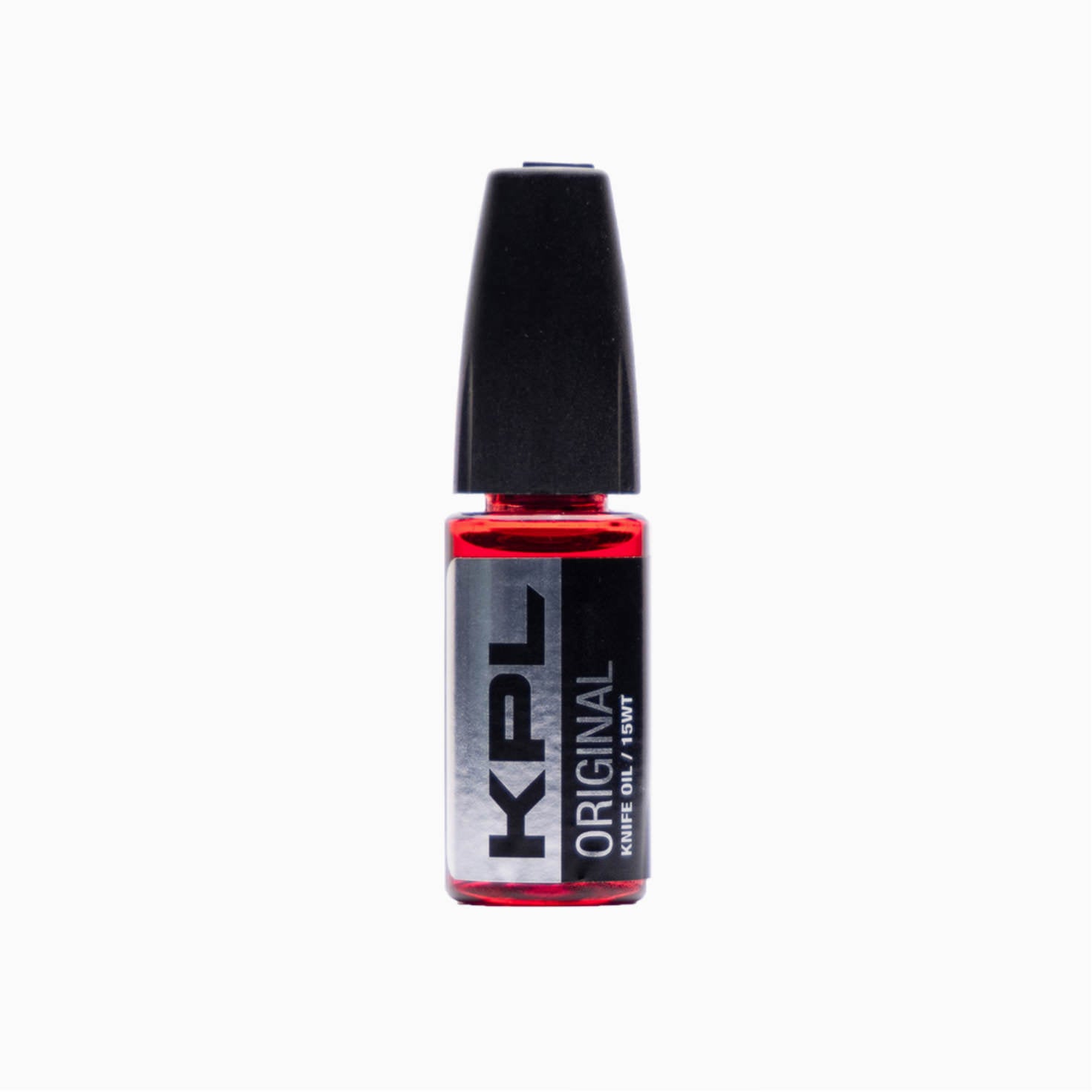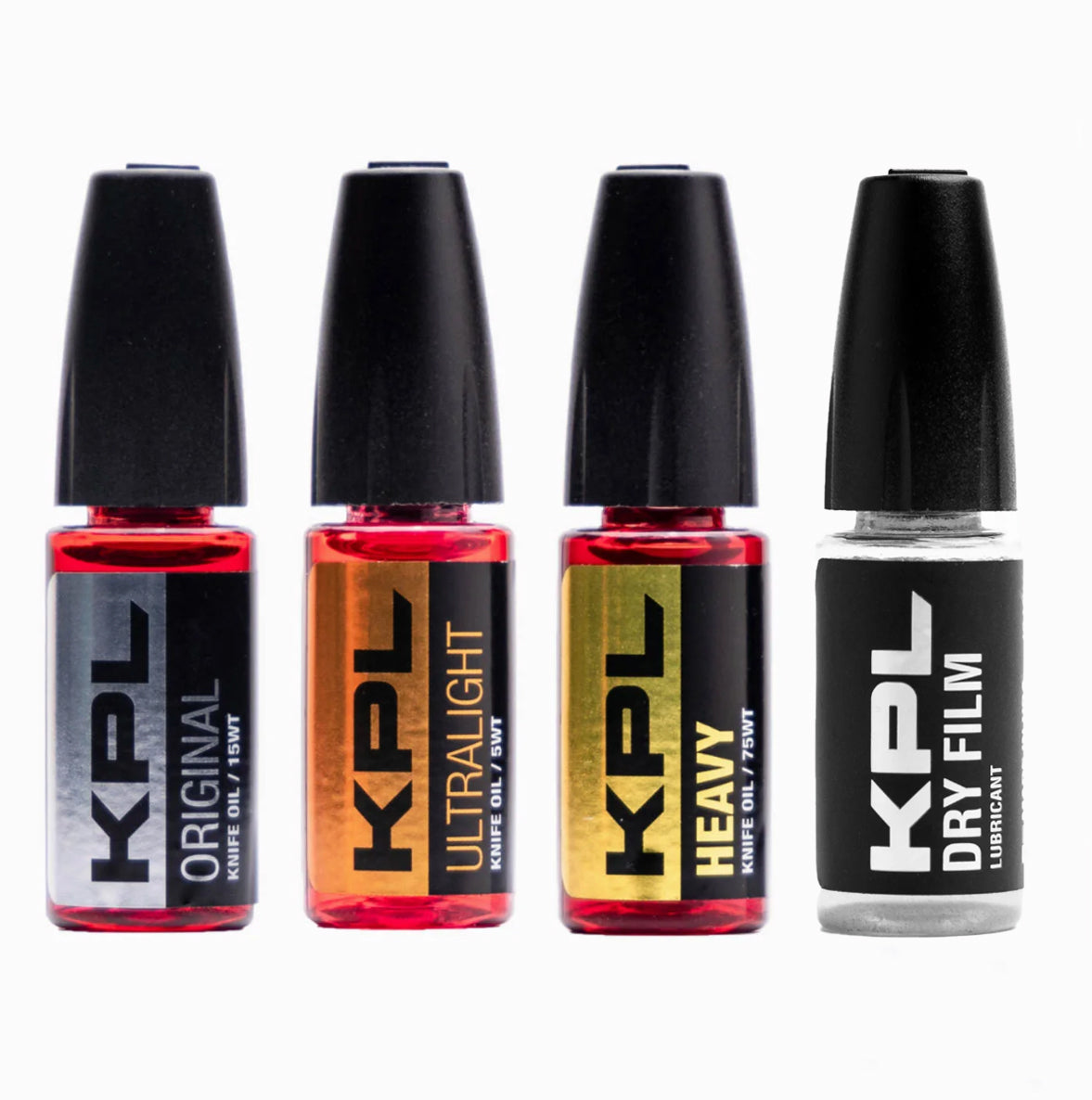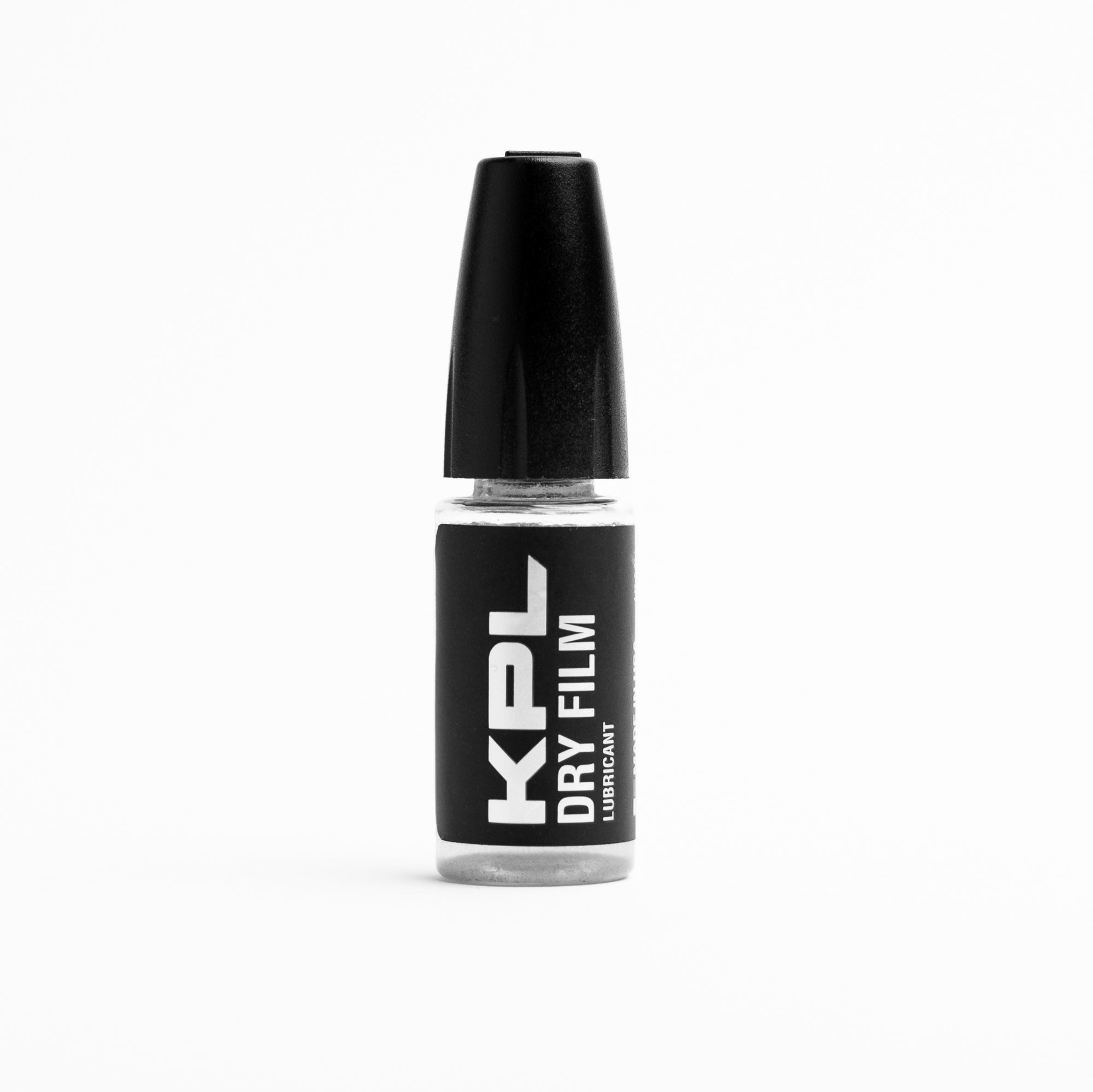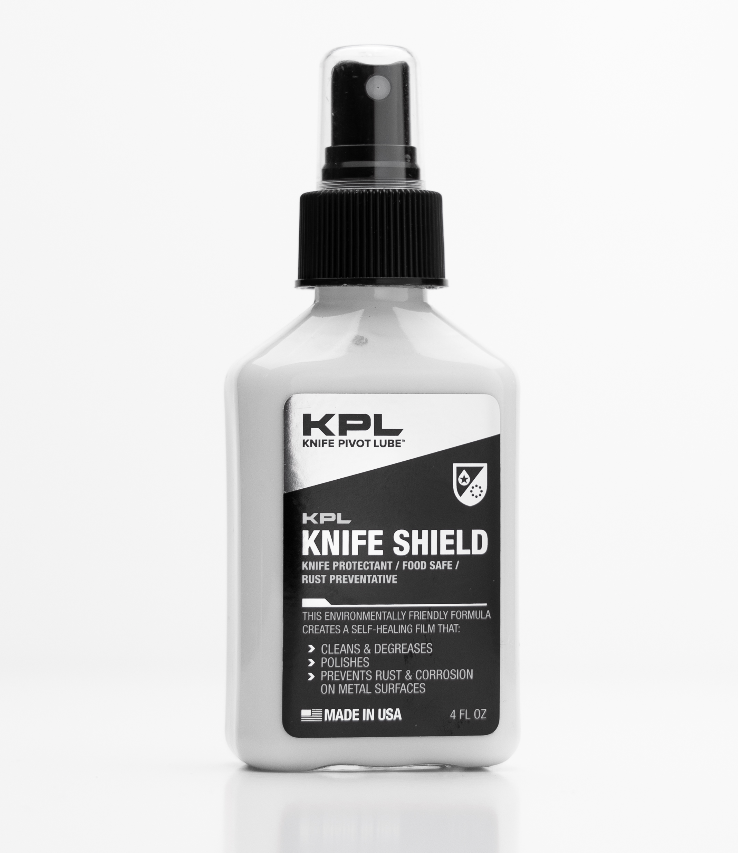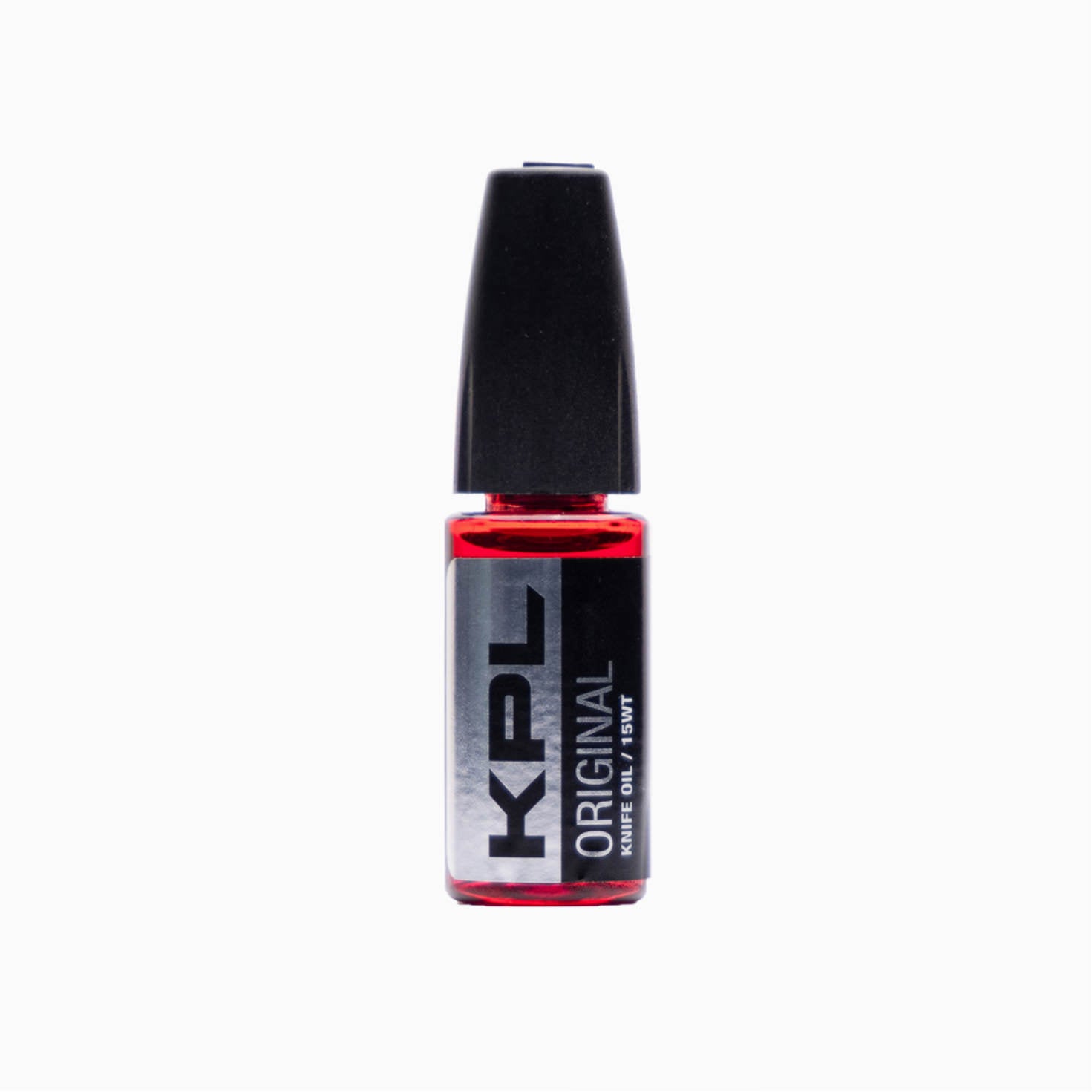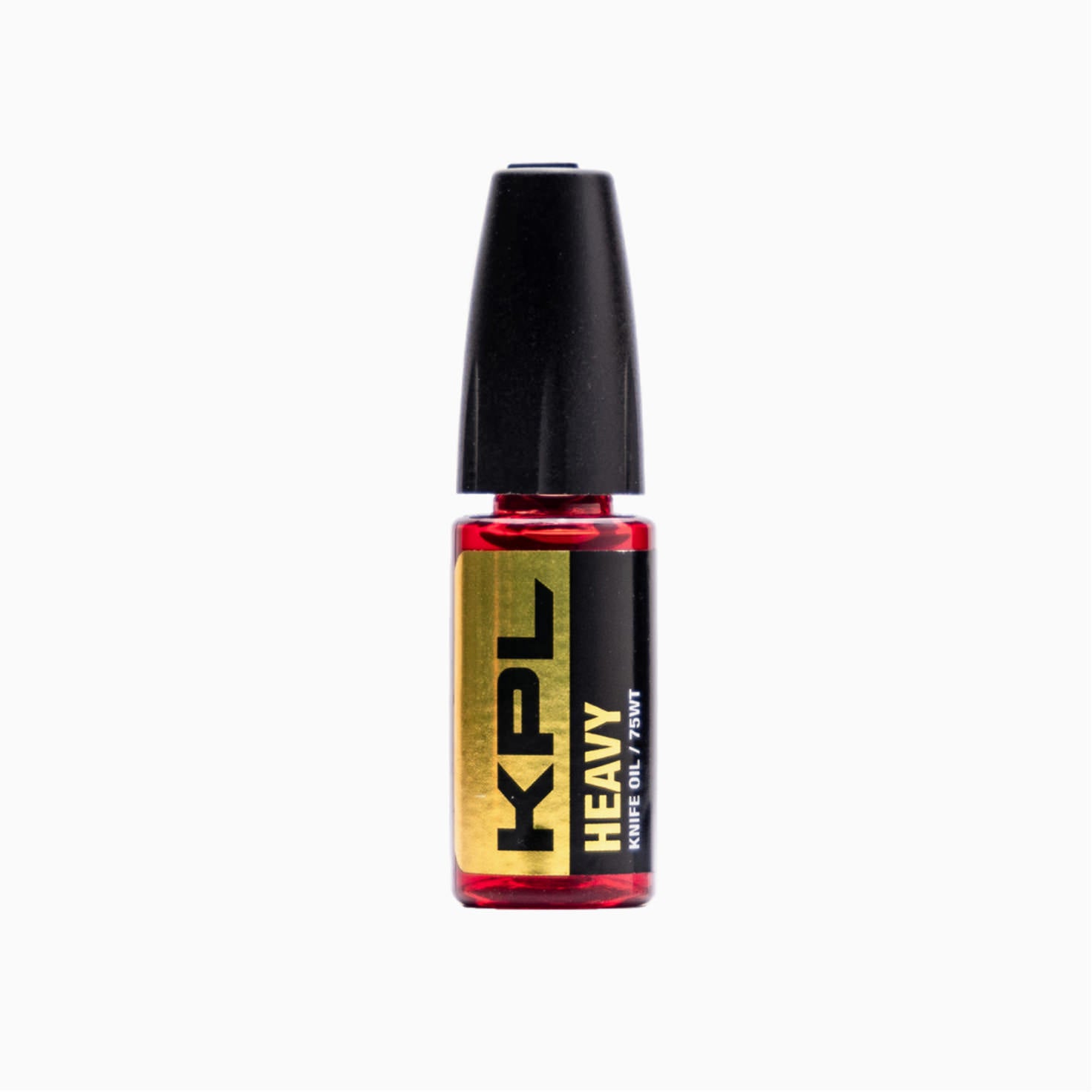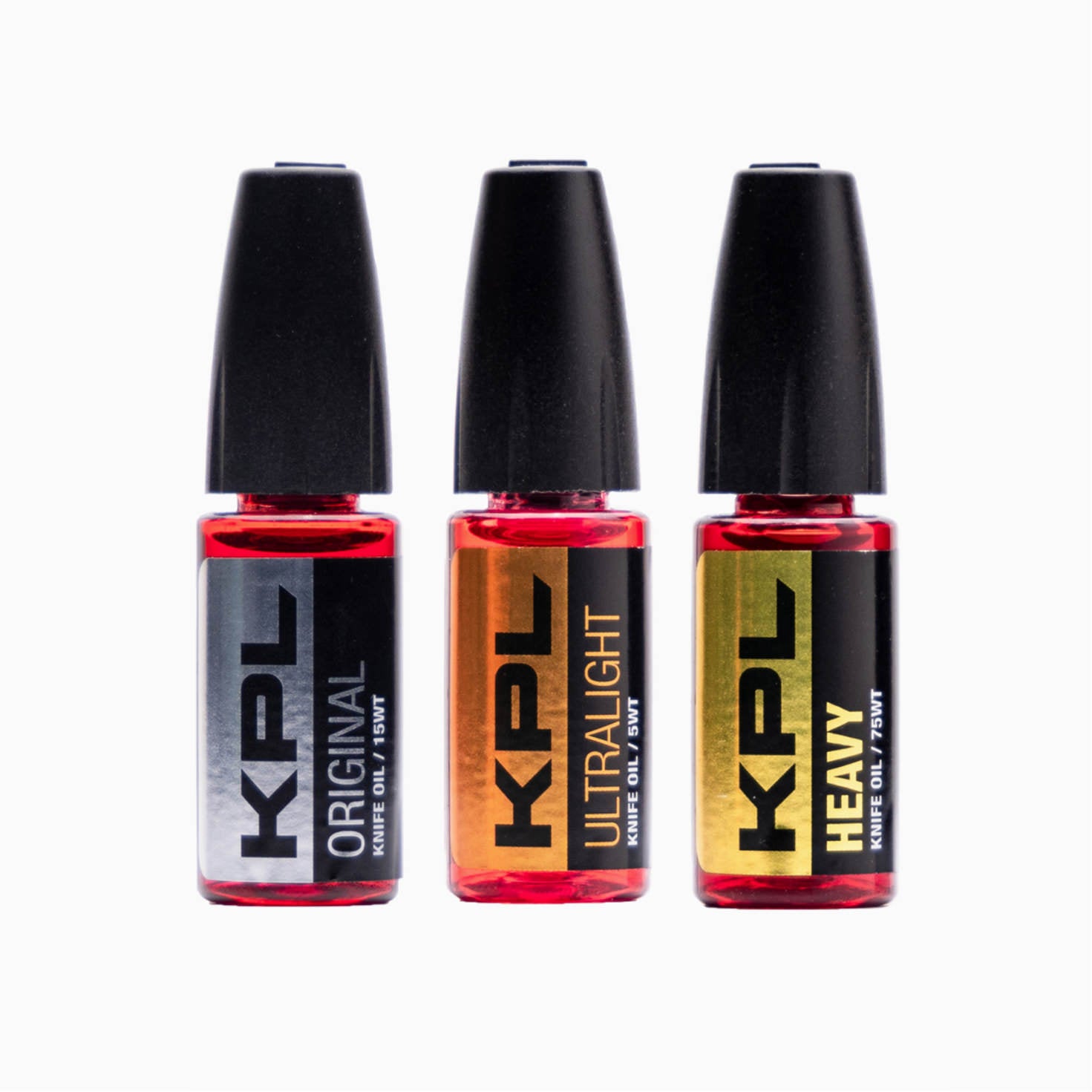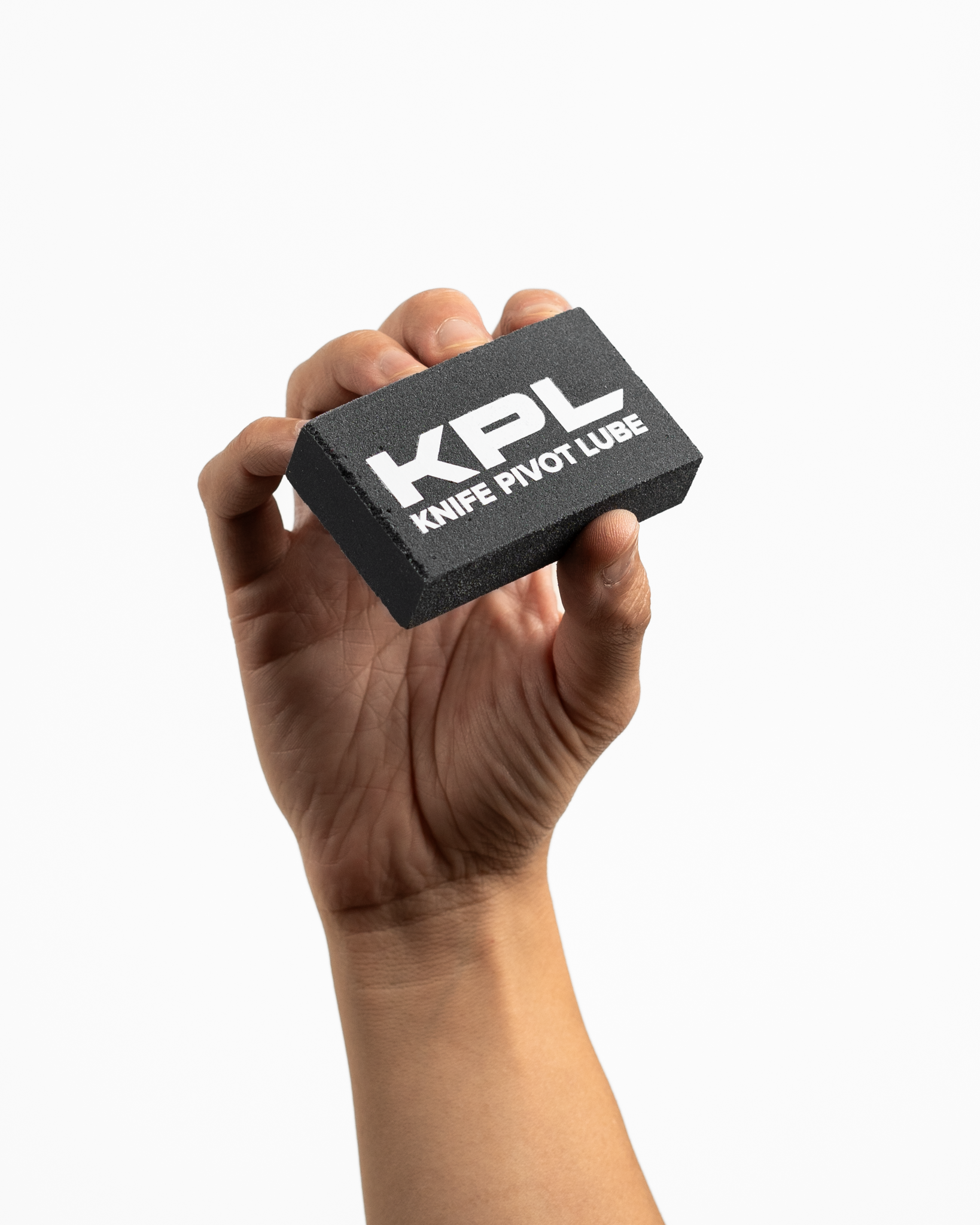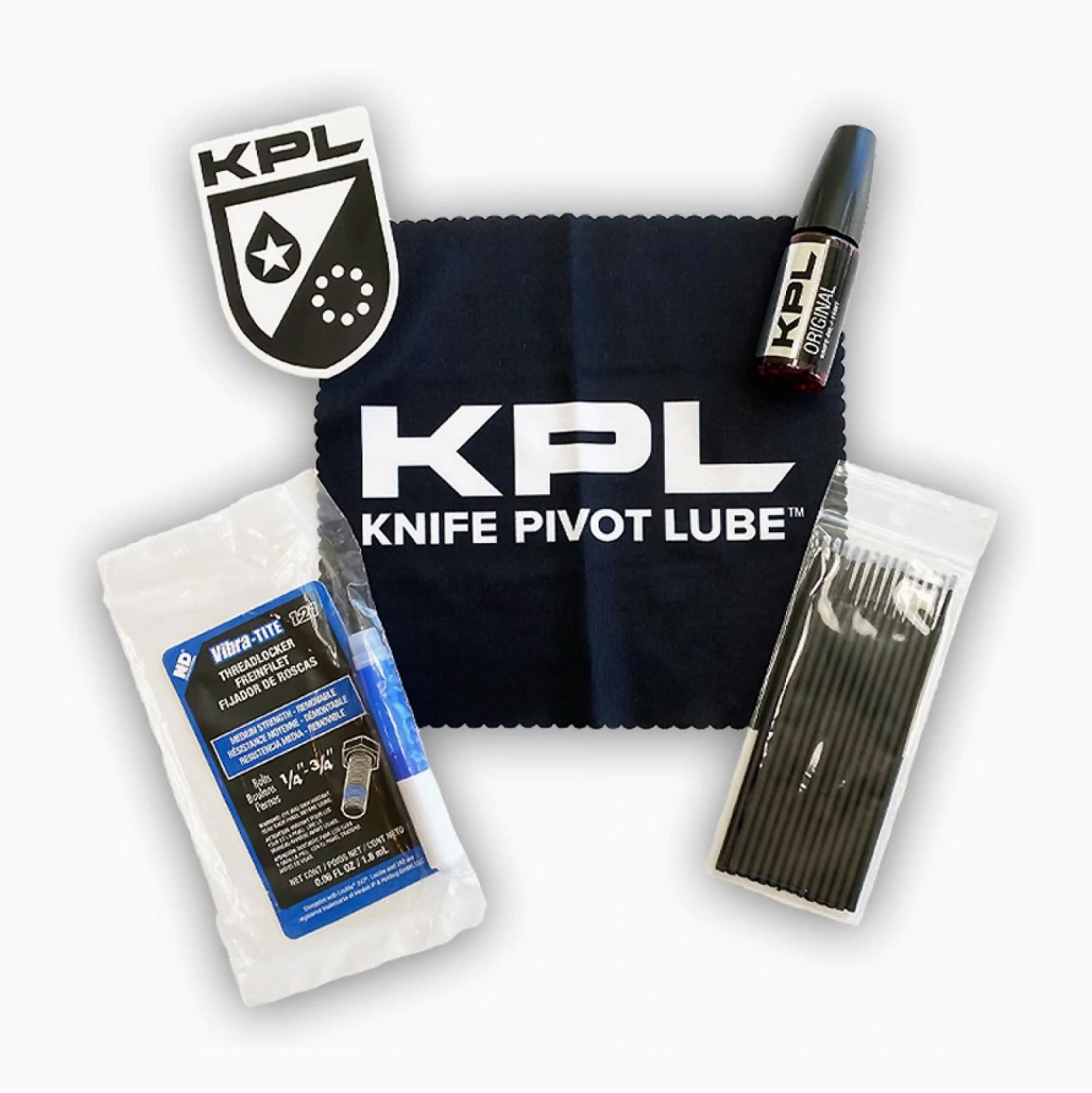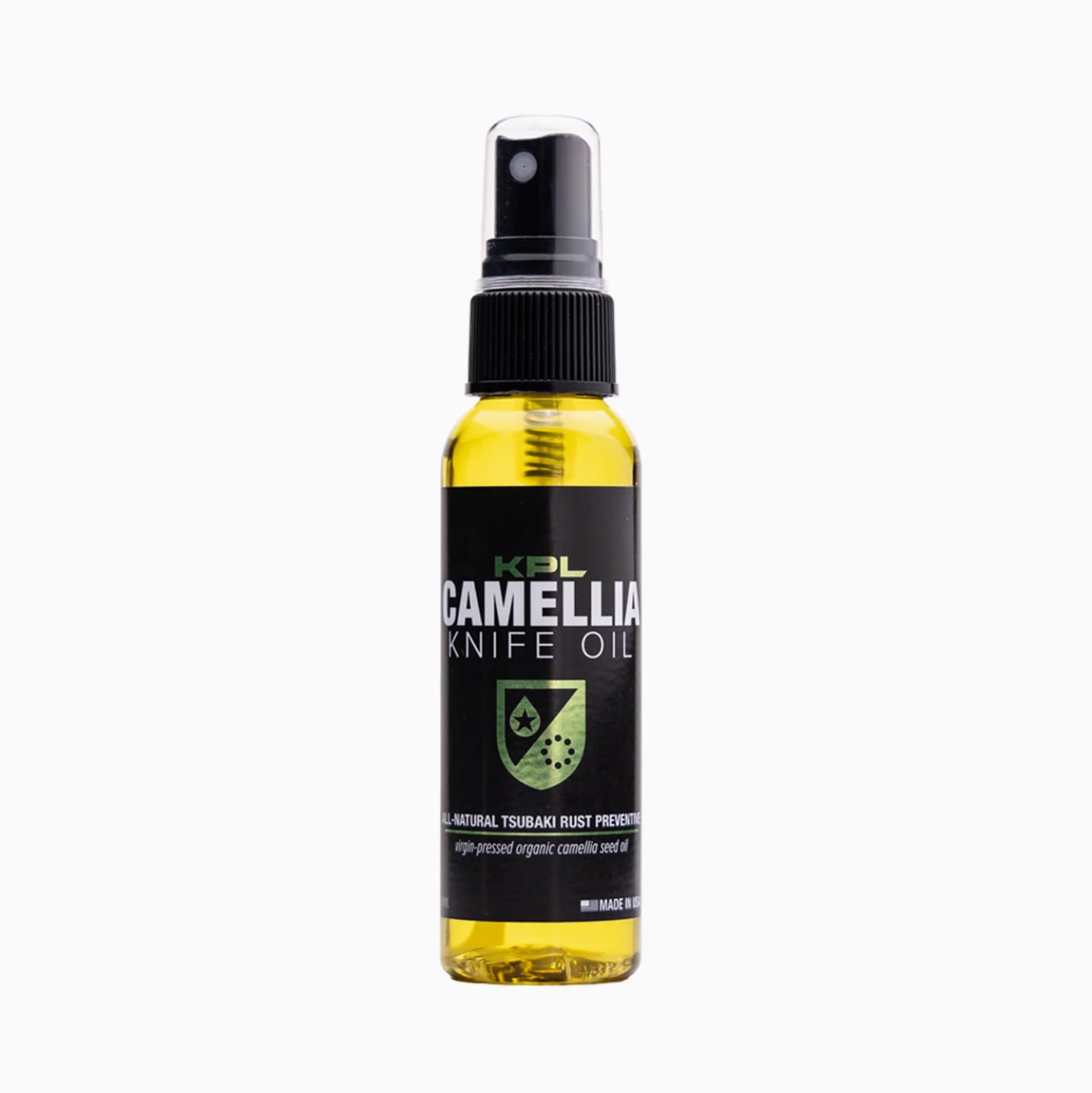A blade coating, simply stated, is a layer of material that is applied to the surface of a knife blade. Blade coatings have become a standard offering in the knife industry for both practical uses and aesthetic value. These coatings were originally designed to help prevent damage to the knife blade particularly from rust and corrosion on high carbon steels. Beyond just the ability to protect your blade, coatings also offer a variety of colors allowing knife makers and manufacturers the ability to customize the look of their knives.
For the average knife enthusiast it is important to know that not all coatings are created equal! We will be looking at some of the most common blade coatings and discussing their advantages and drawbacks so you can decide if blade coatings are right for you, and if so, what coating works best for your application.
Gun Blue and Parkerized Finish

These coating options are among the oldest out there, both of which can be found more commonly in the firearm industry. Gun Blue, also called black oxide, involves leaving layers of black iron oxide on the metal and Parkerized typically leaves a zinc phosphate coating. These coatings provide some corrosion resistance, but are considered to be on the lower end compared to other coatings. Both these coatings are relatively inexpensive and easy to make, making them popular among many knife makers and manufacturers. Both these finishes are not very durable and will easily scratch and wear with use. Gun Blue is not considered food safe, while parkerized finishes are more food safe.
Blackwash

Blackwash takes the Black oxide coating a step further by applying a stonewash after the coating is applied giving it a worn look. This is a purely aesthetic step which will wear like any black oxide coating, and provide less corrosion resistance due to the partial removal of coating during the stone washing process.
Teflon Coatings

Teflon is a plastic-like chemical coating that is designed to reduce corrosion and great non-stick qualities. This coating is often found on less expensive knives and is not very durable. Despite Teflon being widely used in pans, Teflon coated knives are not considered food safe if the coating is chipped or worn.
Powder Coatings

Powder coatings involve the use of an electro spray to apply an incredibly durable epoxy finish to the knife blade. This highly protective finish can come in a wide variety of colors allowing for high levels of customization. While this coating is not technically considered food safe, the durability will definitely allow for some food prep provided it is not damaged before use.
Titanium Nitride (TiN) and Titanium Carbonitride (TiCN)

These two coatings involve the application of hard powdered ceramic in a physical vapor deposit process (PVD). These coatings provide a rust resistant coating that is more durable than black oxide. TiCN is the most durable version of Titanium Nitride providing 80% more wear resistance than other TiN coatings. These coatings allow for some color variation such as black, blue, silver, bronze, and gold. TiN and TiCN coatings are entirely food safe and often used in surgical applications.
Cerakote

Cerakote is an incredibly durable ceramic coating that is baked onto the knife blade. Cerkote has the widest variety of color options allowing makers near limitless customization options. This coating is scratch and impact resistant and will hold up well in any environment. Cerakote is one of the better blade coating options, however, the process of applying Cerakote is time consuming and expensive so it is less commonly found when compared to other coatings. Like powder coats, Cerakote is not technically food safe, but its incredible durability should ease concerns during limited food prep tasks. There are similar coatings such as Durakote and Gunkote, while they are easier to apply, they are less durable than traditional Cerakote.
Diamond Like Carbon (DLC)

DLC coating involves the application of a thin layer of carbon to a blade surface that is close to the hardness rating of diamonds. This provides the most durable coating on the market right now. This black coating is non reflective, rust resistant, and low friction. DLC is 100% food safe and can be used in any food prep application. The only drawback to DLC is the high cost and limited availability of facilities that can apply this coating, making it less common than other types of coating.
Which one is right for you?
There is no right answer for everyone, while some coatings are superior to others they will often come at a higher cost or limited availability. For some coatings may be something you don’t want at all. Coatings provide a great way to protect your knife from wear and corrosion, but some people like the look of a sterile uncoated blade. Even with a blade coating, maintenance is still an important factor in ensuring your knife will last for years to come! KPL has you covered with our full line of Knife care products! As a thank you to all our loyal readers you can get 10% off your purchase today using code BLACKFLAG at checkout!

